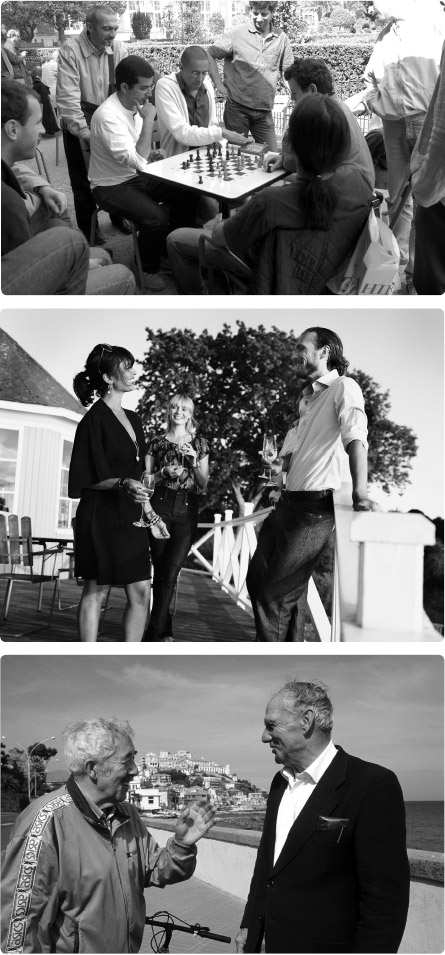Reducing Uncertainty

When we are uncertain about other people’s behavior, we can learn more about them by observing them, by asking their friends about them, or even by interacting with them directly.
Top: Cindy Charles/PhotoEdit. Middle: Jonas Ingerstedt/Getty Images. Bottom: David Grossman/The Image Works
Cindy Charles/PhotoEdit
When intercultural communication scholar Patricia Covarrubias (2000) was a young girl, she and her family immigrated to the United States from Mexico. On her first day of school in her adoptive country, Patricia’s third-grade teacher, Mrs. Williams, led her to the front of the classroom to introduce her to her new classmates. She expected Mrs. Williams to introduce her as “Patricia Covarrubias,” or perhaps “Patricia.” Instead, Mrs. Williams turned to the class and said, “Class, this is Pat.” Patricia was dumbfounded. In her entire life, she had never been “Pat,” nor could she understand why someone would call her “Pat.” As she explains, “In one unexpected moment, all that I was and had been was abridged into three-letter, bottom-line efficiency” (Covarrubias, 2000, pp. 10–11). The encounter bolstered her feeling that she was an outsider in an uncertain environment.
In most interpersonal interactions, the perception process unfolds in a rapid, straightforward manner. But sometimes we find ourselves in situations where people communicate in perplexing ways. In such contexts, we experience uncertainty, the anxious feeling that comes when we can’t predict or explain someone else’s communication.
Uncertainty is common during first encounters with new acquaintances, when we don’t know much about the people with whom we’re communicating. According to Uncertainty Reduction Theory  , our primary compulsion during initial interactions is to reduce uncertainty about our communication partners by gathering enough information about them so their communication becomes predictable and explainable (Berger & Calabrese, 1975). When we reduce uncertainty, we’re inclined to perceive people as attractive and likable, talk further, and consider forming relationships with them (Burgoon & Hoobler, 2002).
, our primary compulsion during initial interactions is to reduce uncertainty about our communication partners by gathering enough information about them so their communication becomes predictable and explainable (Berger & Calabrese, 1975). When we reduce uncertainty, we’re inclined to perceive people as attractive and likable, talk further, and consider forming relationships with them (Burgoon & Hoobler, 2002).
Uncertainty can be reduced in several ways, each of which has advantages and disadvantages (Berger & Bradac, 1982). First, you can observe how someone interacts with others. Known as passive strategies, these approaches can help you predict how he or she may behave when interacting with you. Examples include observing someone hanging out with friends at a party or checking out someone’s Facebook page. Second, you can try active strategies by asking other people questions about someone you’re interested in. You might find someone who knows the person you’re assessing and then get him or her to disclose as much information as possible about that individual. Be aware, though, that this poses risks: the target person may find out that you’ve been asking questions. That could embarrass you—and upset the target. In addition, third-party information may not be accurate. Third, and perhaps most effective, are interactive strategies: starting a direct interaction with the person you’re interested in. Inquire where the person is from, what he or she does for a living, and what interests he or she has. You should also disclose personal information about yourself. This enables you to test the other person’s reactions to you. Is the person intrigued or bored? That information can help you reduce your uncertainty about how to communicate further.
Self-Reflection
When do you use passive strategies to reduce your uncertainty? Active strategies? Interactive? Which do you prefer and why? What ethical concerns influence your own use of passive and active strategies?
Question
Self-Reflection
LearningCurve